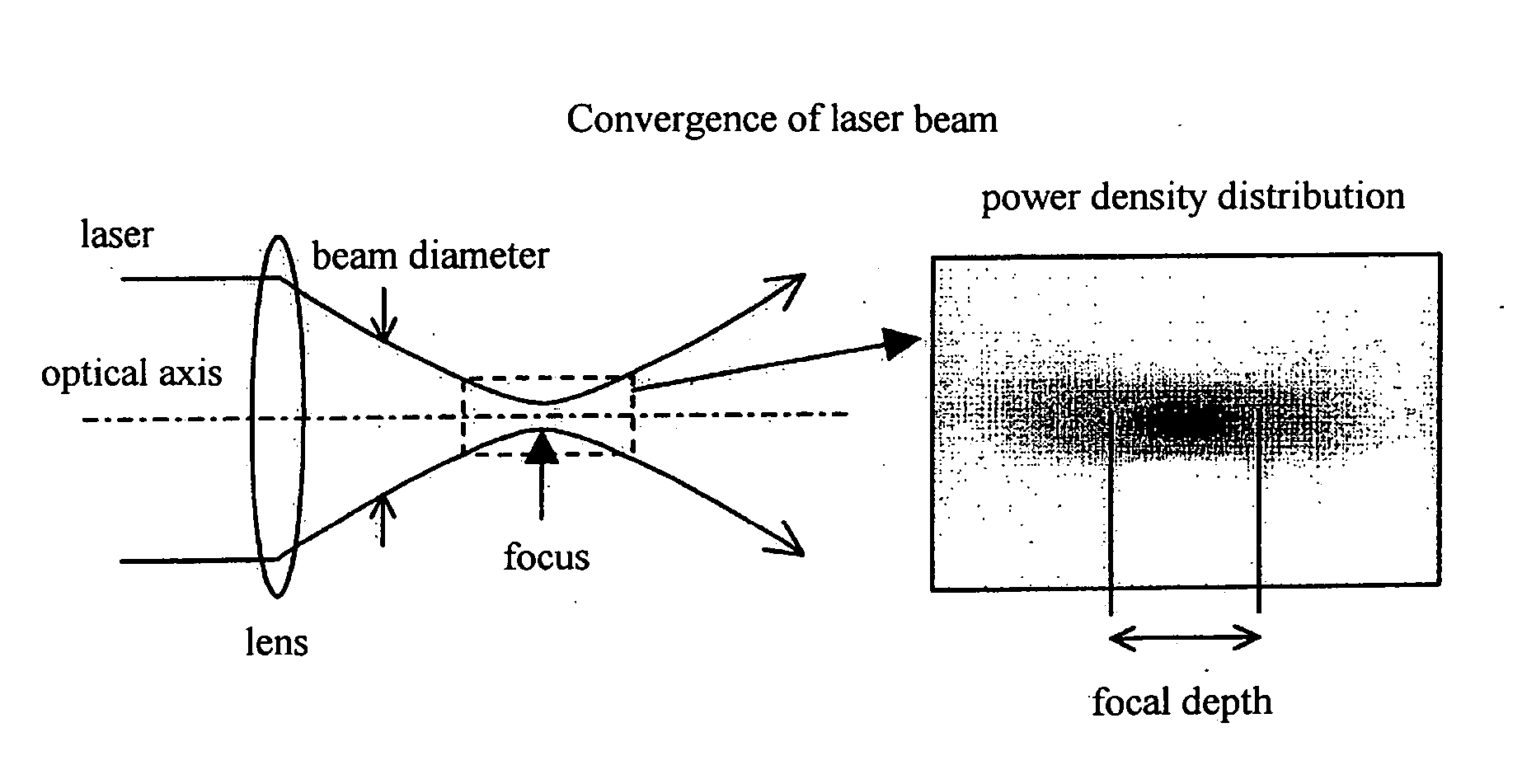Laser processing method and laser processing apparatus
- Summary
- Abstract
- Description
- Claims
- Application Information
AI Technical Summary
Benefits of technology
Problems solved by technology
Method used
Image
Examples
embodiment 1
[0140] Laser FWHM Pulse width: Δt=120 fs (1.2×10−13 s)
[0141] Incident beam FWHM diameter: Δi=4.7 mm (w0=4.0 mm)
[0142] Lens Refractive Lens and Diffractive Lens
[0143] Focal Length: f0=100 mm
[0144] Z-parameter: 2f0cΔt / Δi2=0.32
[0145] The Z-parameter of 0.32 is between 0.25 and 1 (0.25<0.32<1), which satisfies the aforementioned requirement between 0.25≦Zp≦1.
[0146] The convergence properties of a refraction lens and a diffraction lens have been calculated on the abovecited conditions. FIG. 5 shows the results of calculations of power densities converged by the refraction lens and the diffraction lens. Left column figures of FIG. 5 demonstrate time-dependent spatial distributions of power density by the refractive lens. Right column figures of FIG. 5 show time-dependent spatial distributions of power density converged by the diffractive lens. The abscissa denotes distances. Individual figures have a length of 900 μm in the horizontal direction and a width in the vertical direction....
PUM
| Property | Measurement | Unit |
|---|---|---|
| Time | aaaaa | aaaaa |
| Transparency | aaaaa | aaaaa |
| Wavelength | aaaaa | aaaaa |
Abstract
Description
Claims
Application Information
 Login to View More
Login to View More - R&D
- Intellectual Property
- Life Sciences
- Materials
- Tech Scout
- Unparalleled Data Quality
- Higher Quality Content
- 60% Fewer Hallucinations
Browse by: Latest US Patents, China's latest patents, Technical Efficacy Thesaurus, Application Domain, Technology Topic, Popular Technical Reports.
© 2025 PatSnap. All rights reserved.Legal|Privacy policy|Modern Slavery Act Transparency Statement|Sitemap|About US| Contact US: help@patsnap.com



